Free SVG to WEBP Online Converter
Instantly convert your SVG files to optimized WEBP images using our free online converter. Get faster uploads and immediate delivery through a ready-to-use CDN link—perfect for improving your site’s performance and simplifying your workflow.
Add a File Converter to your app
Frequently Asked Questions
What is SVG?
SVG stands for Scalable Vector Graphics. It’s an XML-based file format for defining two-dimensional graphics. Here are some key advantages:
- Scalability: SVG images can be scaled up or down without losing quality, making them ideal for responsive web design.
- Vector-Based: Unlike raster images (like JPEG or PNG), SVG uses vector graphics, which are defined by mathematical equations rather than pixels.
- Interactivity and Animation: SVG supports interactivity and animation, allowing for dynamic and interactive graphics on web pages.
- Text-Based: SVG files are written in XML, which means they can be created and edited with any text editor, and they are easily searchable and indexable.
- Browser Support: Most modern web browsers support SVG, making it a widely compatible format for web graphics.
- Open Standard: SVG is an open standard developed by the World Wide Web Consortium (W3C), ensuring broad support and ongoing development.
How can SVG to WEBP Converter help for Image Optimization?
Using an SVG to WEBP converter can significantly enhance image optimization, especially for web applications. Here are some key benefits:
- Reduced File Size: WEBP images are generally smaller than SVG files, especially when using lossy compression. This reduction in file size helps in faster loading times for web pages.
- Improved Performance: Smaller image files mean less data to transfer over the network, which can improve the overall performance of your website. This is particularly important for users with slower internet connections.
- Enhanced Compatibility: While SVG is widely supported, converting to WEBP ensures compatibility with all modern browsers and devices, providing a consistent user experience.
- Quality Retention: WEBP supports both lossy and lossless compression, allowing you to choose the best balance between image quality and file size.
- Versatility: WEBP supports features like transparency and animation, making it a versatile choice for various types of images.
Which tools should I use if I need to change SVG or other images format to WEBP?
You may handle format conversions for other image formats, such as HEIC to WEBP, JPG to WEBP, PNG to WEBP, GIF to WEBP, TIFF to WEBP, and PSD to WEBP by using other free Filestack image converters. These tools make it simple to optimize your photos while preserving their quality and according to contemporary requirements.
Keep in mind that you can utilize Filestack API to perform conversions programmatically. Register for the API to easily optimize your photos for the web and automate format conversion.
Can I use SVG to WEBP converter on any browser?
Filestack SVG to WEBP free converter tool can be used on any modern web browser like Chrome, Firefox, Edge, and Safari.
How can I programmatically convert SVG to WEBP in a React application?
You can use Filestack React SDK to programmatically convert SVG to WEBP in a React application.
Filestack offers most file conversions for free. Sign up for free today to get started!
Supported Cloud Storage Providers

Why Use File Converters?
Sharing SVG images shouldn’t slow down your workflow. With Filestack’s advanced conversion tools, easily convert SVG files into high-quality WEBP images—reducing file sizes without losing visual clarity. Boost productivity, improve load times, and streamline your team’s collaboration.
What Filestack Can Provide For You
GROUP IMAGES INTO A COLLAGE
URL SCREENSHOT
PDF FILE PROCESSING
DOCUMENT DETECTION
VIRUS SCAN & MALWARE DETECTION
GENERATE A QR CODE
Let’s Get Started.
Just One Integration, One Time…
import * as filestack from 'filestack-js';
const client = filestack.init('YOUR API KEY');
client.upload(fileObject).then(data =>console.log(data.url));gem 'filestack'
client = FilestackClient.new('YOUR_API_KEY', security: security_object)
filelink = client.upload(filepath: '/path/to/file')$ composer require --prefer-dist filestack/filestack-php
use Filestack\\FilestackClient;
$client = new FilestackClient('YOUR_API_KEY');
$filelink = $client-upload('/path/to/file');$ pip install filestack-python
from filestack import Client client = Client("")
params = {'mimetype': 'image/png'}
new_filelink = client.upload(filepath="path/to/file", params=params)
print(new_filelink.url)